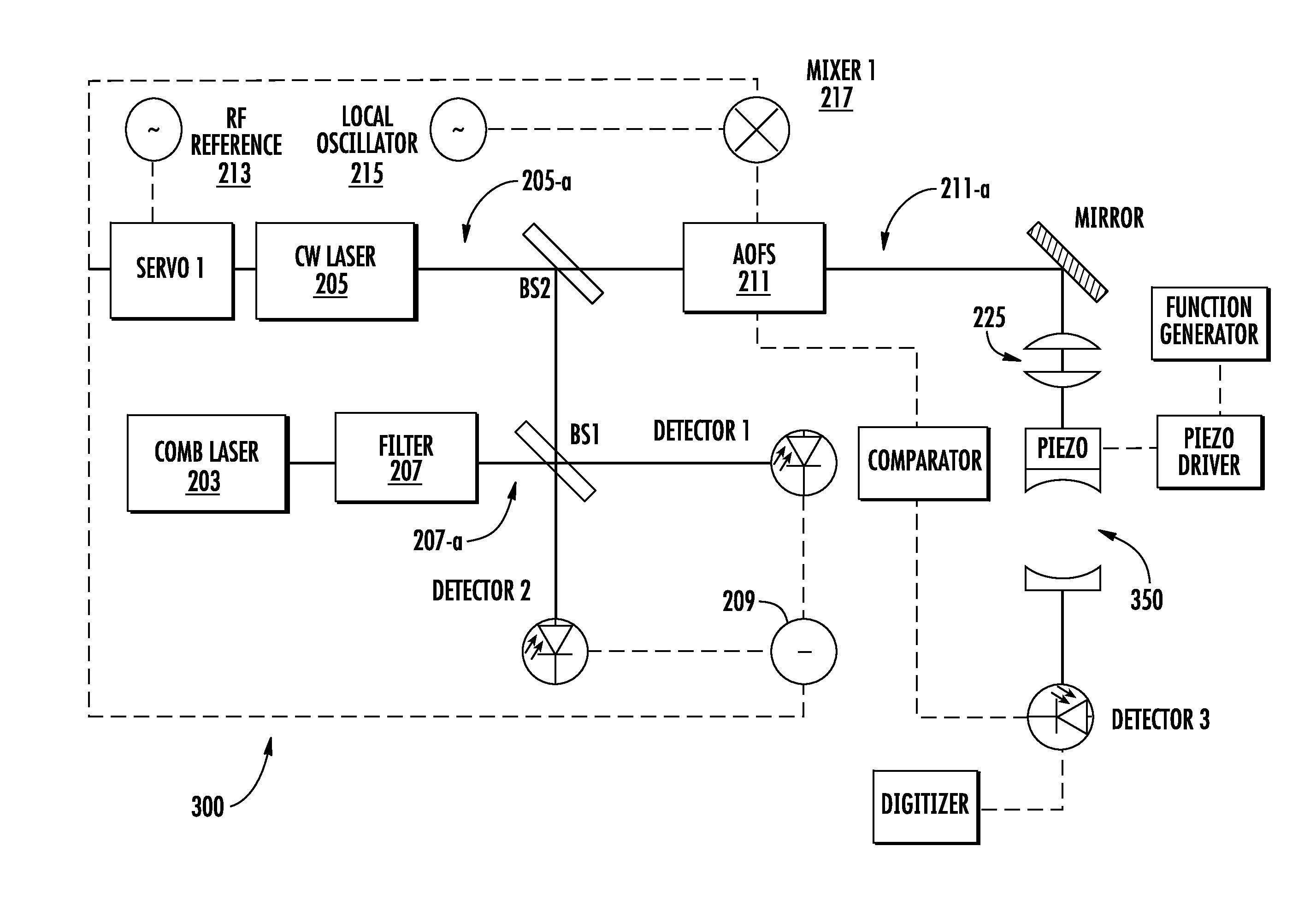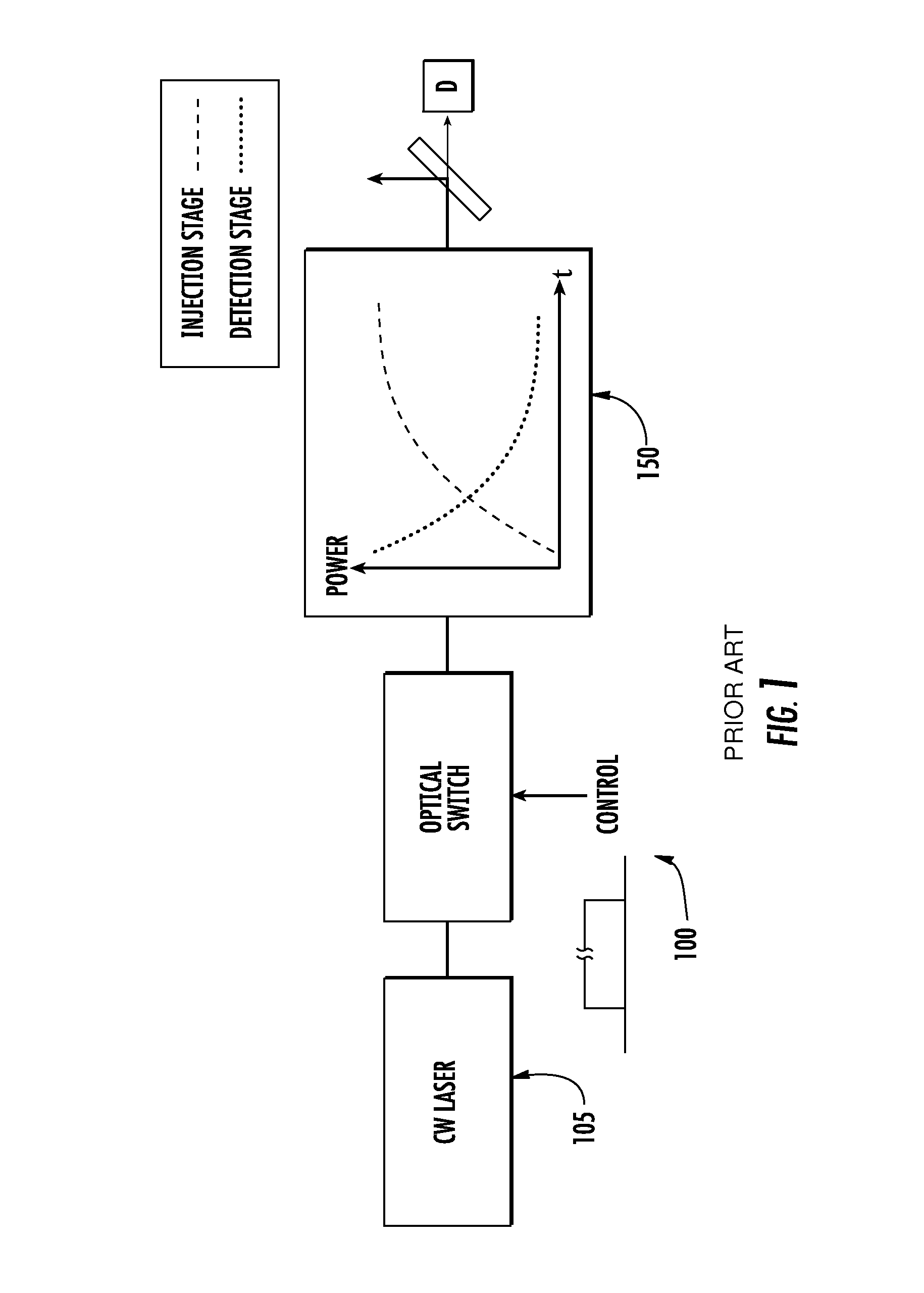Methods for precision optical frequency synthesis and molecular detection
a technology of optical frequency synthesis and molecular detection, applied in the direction of optical radiation measurement, interferometric spectrometry, instruments, etc., can solve the problem of not being efficiently coupled into high-finesse enhancement cavities
- Summary
- Abstract
- Description
- Claims
- Application Information
AI Technical Summary
Benefits of technology
Problems solved by technology
Method used
Image
Examples
Embodiment Construction
[0027]A conventional cavity ring down spectrometer configuration 100 is further depicted in FIG. 1. Generally, a cw laser output is injected into the ring down cavity, leading to a buildup of the optical power, referred to herein as intra-cavity signal evolution within the ring down cavity. FIG. 1 schematically illustrates such an arrangement having cw laser 105 and ring down cavity 150, with an optical switch disposed therebetween. In at least one embodiment the optical switch controls transmission. The optical switch may include an acousto-optic or electro-optic device in either bulk or integrated form. Cw laser injection can be controllably interrupted with the optical switch. When the optical switch is controlled to allow transmission (e.g.: closed with a TTL control signal), the cw beam is injected into the ring cavity, with intra-cavity signal evolution illustrated with the buildup of power in ring-down cavity 150. When the switch prevents transmission, the diminishing intra-c...
PUM
| Property | Measurement | Unit |
|---|---|---|
| frequency | aaaaa | aaaaa |
| frequency | aaaaa | aaaaa |
| frequency | aaaaa | aaaaa |
Abstract
Description
Claims
Application Information
 Login to View More
Login to View More - R&D
- Intellectual Property
- Life Sciences
- Materials
- Tech Scout
- Unparalleled Data Quality
- Higher Quality Content
- 60% Fewer Hallucinations
Browse by: Latest US Patents, China's latest patents, Technical Efficacy Thesaurus, Application Domain, Technology Topic, Popular Technical Reports.
© 2025 PatSnap. All rights reserved.Legal|Privacy policy|Modern Slavery Act Transparency Statement|Sitemap|About US| Contact US: help@patsnap.com



